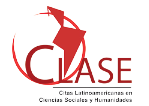A construção do discurso em ontologias: um estudo com base na semiótica discursiva
DOI:
https://doi.org/10.5433/1981-8920.2019v24n3p78Palavras-chave:
Ontologia, Sistemas de Organização do Conhecimento, Representação da Informação e do Conhecimento, Semiótica Discursiva, DiscursoResumo
Introdução: Este trabalho apresenta um estudo das ontologias a partir da ferramenta teórico Semiótica Discursiva. Foi desenvolvida uma ontologia a partir dessa perspectiva, possibilitando analisar as vantagens e desvantagens desse modelo. A partir da ontologia desenvolvida, investigou-se como os conceitos (classes) de uma ontologia são formadas no que concerne ao viés de quem a desenvolve, o ontologista, sujeito inserido em uma dada realidade sócio-histórico-ideológica. Objetivo: Compreender, com a utilização da Semiótica Discursiva, de que forma elementos sociais, históricos e ideológicos podem ser reconhecidos e explicitados na representação de um domínio de conhecimento por meio de uma ontologia. Metodologia: Foi realizada uma pesquisa bibliográfica e descritiva em que, a partir do referencial teórico estudado, foi elaborada uma ontologia que possui fundamentação na Semiótica Discursiva – denominada ontologia semiológica. Essa ontologia, por conta de sua fundamentação teórica, foi construída de uma forma diferente daquela utilizada em ontologias “tradicionais”, especificamente no que concerne à formação dos axiomas que caracterizam os conceitos. Resultados: Por conta de sua estrutura diferenciada, a ontologia semiológica possibilitou uma forma de explicitar as condições de produção discursiva – condições sócio-histórico-ideológicas – presentes na representação de um domínio. Conclusões: Concluiu-se que, apesar de a ontologia semiológica não ser tão eficiente, tendo em conta os requisitos a que uma ontologia deve atender, esse tipo de ontologia pode auxiliar na investigação de questões importantes para a representação da informação e do conhecimento, especialmente no que tange ao discurso veiculado, mesmo que indiretamente, pelos Sistemas de Organização do Conhecimento (SOCs).
Downloads
Referências
BARROS, T. H. B.; GOMES, D. L. Classification and knowledge organization systems: ontologies and archival classification. Advances in Knowledge Organization, v. 16, p. 103-111, 2018.
FIORIN, J. L. Sendas e veredas da semiótica narrativa e discursiva. Delta, v. 15, n. 1, fev. 1999.
FLORES, V. N.; TEIXEIRA, M. Introdução à linguística da enunciação. São Paulo: Contexto, 2013.
FONTANILLE, J. Semiótica do discurso. São Paulo: Contexto, 2012.
GREIMAS, A. J. Semântica estrutural. São Paulo: Cultrix, 1973.
GREIMAS, A. J. Sobre o sentido II: ensaios semióticos. São Paulo: Nankin/Edusp, 2014.
GREIMAS, A. J. Sobre o sentido: ensaios semióticos. Petrópolis: Vozes, 1975.
GREIMAS, A. J.; COURTÉS, J. Dicionário de semiótica. São Paulo: Contexto, 2013.
GRUBER, T. R. A translation approach to portable ontology specifications. Knowledge acquisition, v. 5, n. 2, p. 199-220, jun. 1993.
GUARINO, N. Understanding, building and using ontologies. International Journal of Human-Computer Studies, v. 46, n. 2-3, p. 293-310, fev. 1997.
MADSEN, B. N.; THOMSEN, H. E. Ontologies vs. classification systems. In: NEALT PROCEEDINGS SERIES, 7., 2009, Odense. Anais [...]. Odense: NODALIDA, 2009. p. 27-32.
MUSEN, M. A. The Protégé project: a look back and a look forward. AI Matters, v. 1, n. 4, p. 4-12, jun. 2015.
NOY, N. F.; MCGUINNESS, D. L. Ontology Development 101: a guide to create your first ontology. Stanford: Knowledge Systems Laboratory Stanford University, 2001. Disponível em: https://protege.stanford.edu/publications/ontology_development/ontology101.pdf. Acesso em: 02 de fev. 2018.
POSSENTI, S. Os limites do discurso: ensaios sobre discurso e sujeito. São Paulo: Parábola Editoria, 2009.
SAUSSURE, F. Curso de linguística geral. 28 ed. São Paulo: Cultrix, 2012.
Downloads
Publicado
Como Citar
Edição
Seção
Licença
A revista se reserva o direito de efetuar, nos originais, alterações de ordem normativa, ortográfica e gramatical, com vistas a manter o padrão culto da língua e a credibilidade do veículo. Respeitará, no entanto, o estilo de escrever dos autores. Alterações, correções ou sugestões de ordem conceitual serão encaminhadas aos autores, quando necessário.
O conteúdo dos textos e a citação e uso de imagens submetidas são de inteira responsabilidade dos autores.
Em todas as citações posteriores, deverá ser consignada a fonte original de publicação, no caso a Informação & Informação.
















